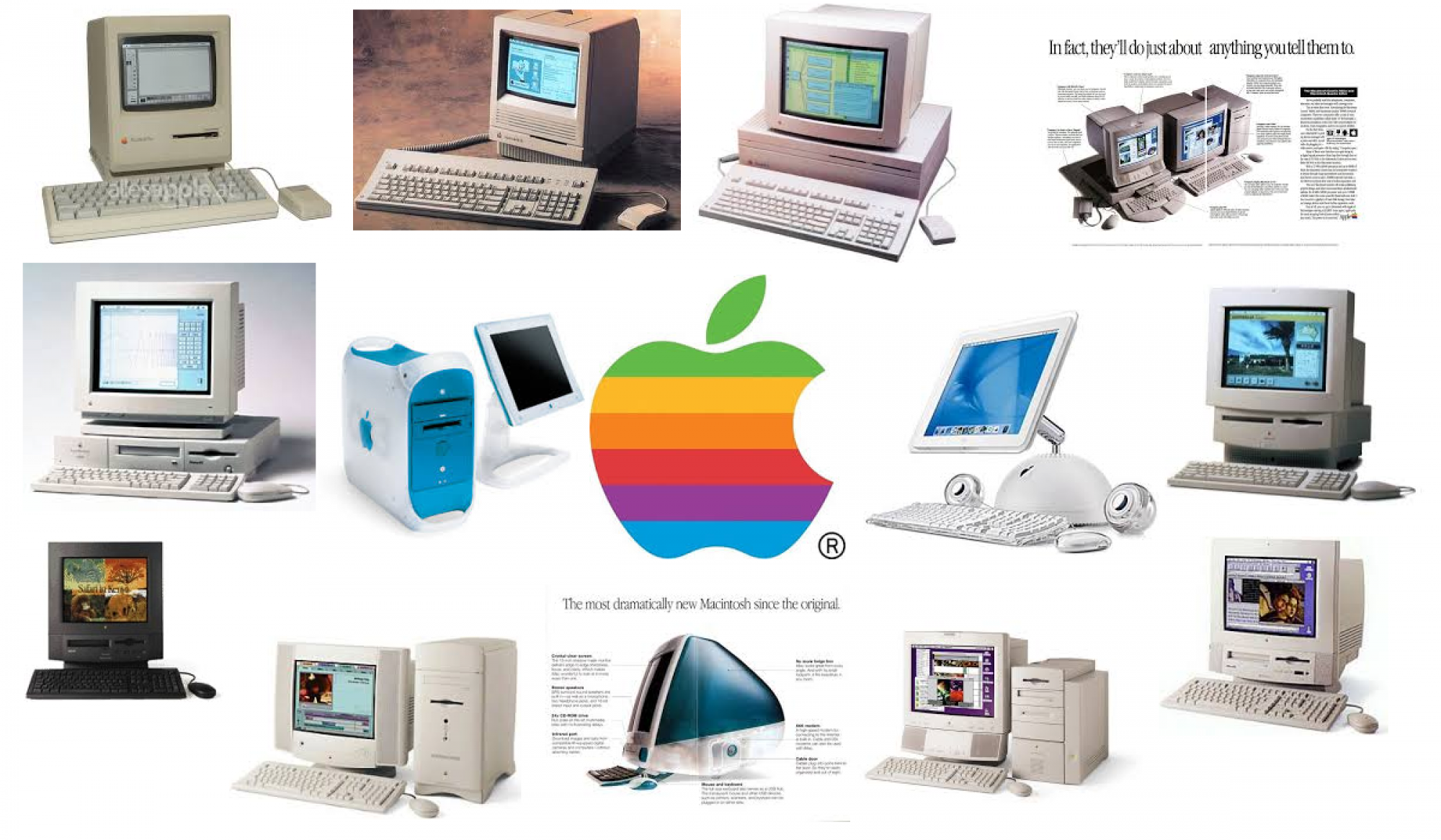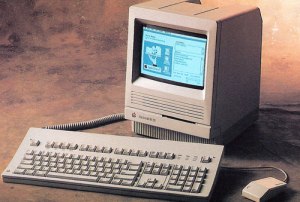PowerBook 520c
Processor: 25 mhz Motorola 68LC040
Floppy Disk drive: 1.44 mb Apple Superdrive
Optical drive: N/A
Standard memory: 4 megabytes, 12 megabytes
Upgraded memory: 32 megabytes
Built-in display: 9 inch color dual-scan passive matrix display
Sound: 16-bit stereo
Video Card: Dedicated video ram
Ports: 1x ADB port, 1x HDI 30 “Scuzzy” port, 2x serial ports, 1x Internal microphone port, 1x Internal sound out port, 1x Mini-15 video port, 1x security lock, 1x AAUI-15 ethernet port.
Original Price: $2,800, $2,900, $4,000
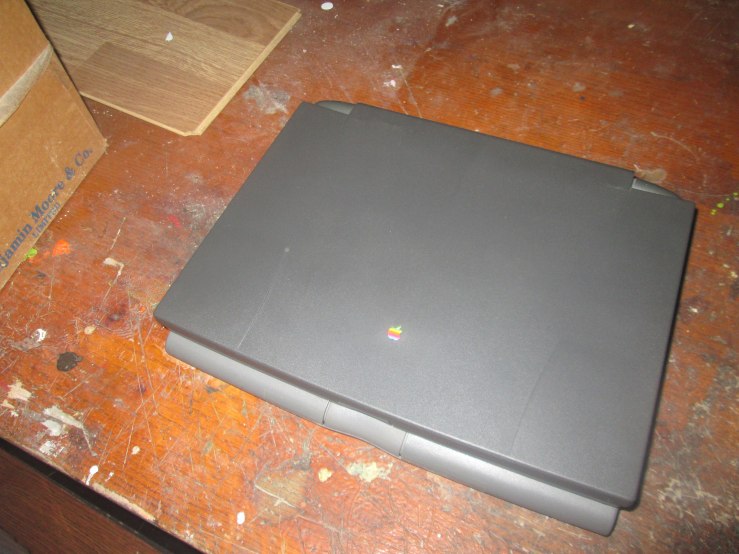 Hello there and welcome the Museum of Apple Computers, where I talk about Apple Computers. This year I decided not to do a Christmas special, but i’m going to review an old Apple laptop computer as a special christmas gift to you guys. The PowerBook 520c was not only the first PowerBook to come with a built-in trackpad, but it was also the first laptop computer ever made to come with a trackpad instead of a trackball and it also had color display instead of a monochrome display. At the time many laptops were still using monochrome displays and 8-bit audio, but the PowerBook 520c is the first ever laptop to be considered desktop replaceable. However this wasn’t the first PowerBook to include a color display. The PowerBook 165c which came only came a year before the PowerBook 520c also had a color display, but I always think that PowerBook 500 series made a bigger impact on the computer industry. The Powerbook 520c has a Motorola 68LC040, which is the low cost version of the Motorola 68040 processor. The only difference between the Motorola 68LC040 and the full Motorola 68040 Processor is that the full 68040 chip has a FPU where as the 68LC040 does not. Even the PowerBook 520c originally came with a Motorola 68LC040 processor, it can be upgraded to use a 183 megahertz PowerPC 603 chip, which is pretty cool if you’d ask me and there were plans make a PowerPC G3 upgrade for this laptop, but it was never produced, but the processor itself isn’t the only thing to be upgraded on this laptop, I’ve heard this model of the powerbook 500 series can be upgraded to use an active matrix display. It’s also interesting to note that this laptop was rated #2 of the all-time best PowerBooks, but this is only for the PowerBook 540c. The PowerBook 520c isn’t nearly as good as the PowerBook 540c, but it’s still a pretty good addition to the PowerBook family.
Hello there and welcome the Museum of Apple Computers, where I talk about Apple Computers. This year I decided not to do a Christmas special, but i’m going to review an old Apple laptop computer as a special christmas gift to you guys. The PowerBook 520c was not only the first PowerBook to come with a built-in trackpad, but it was also the first laptop computer ever made to come with a trackpad instead of a trackball and it also had color display instead of a monochrome display. At the time many laptops were still using monochrome displays and 8-bit audio, but the PowerBook 520c is the first ever laptop to be considered desktop replaceable. However this wasn’t the first PowerBook to include a color display. The PowerBook 165c which came only came a year before the PowerBook 520c also had a color display, but I always think that PowerBook 500 series made a bigger impact on the computer industry. The Powerbook 520c has a Motorola 68LC040, which is the low cost version of the Motorola 68040 processor. The only difference between the Motorola 68LC040 and the full Motorola 68040 Processor is that the full 68040 chip has a FPU where as the 68LC040 does not. Even the PowerBook 520c originally came with a Motorola 68LC040 processor, it can be upgraded to use a 183 megahertz PowerPC 603 chip, which is pretty cool if you’d ask me and there were plans make a PowerPC G3 upgrade for this laptop, but it was never produced, but the processor itself isn’t the only thing to be upgraded on this laptop, I’ve heard this model of the powerbook 500 series can be upgraded to use an active matrix display. It’s also interesting to note that this laptop was rated #2 of the all-time best PowerBooks, but this is only for the PowerBook 540c. The PowerBook 520c isn’t nearly as good as the PowerBook 540c, but it’s still a pretty good addition to the PowerBook family.
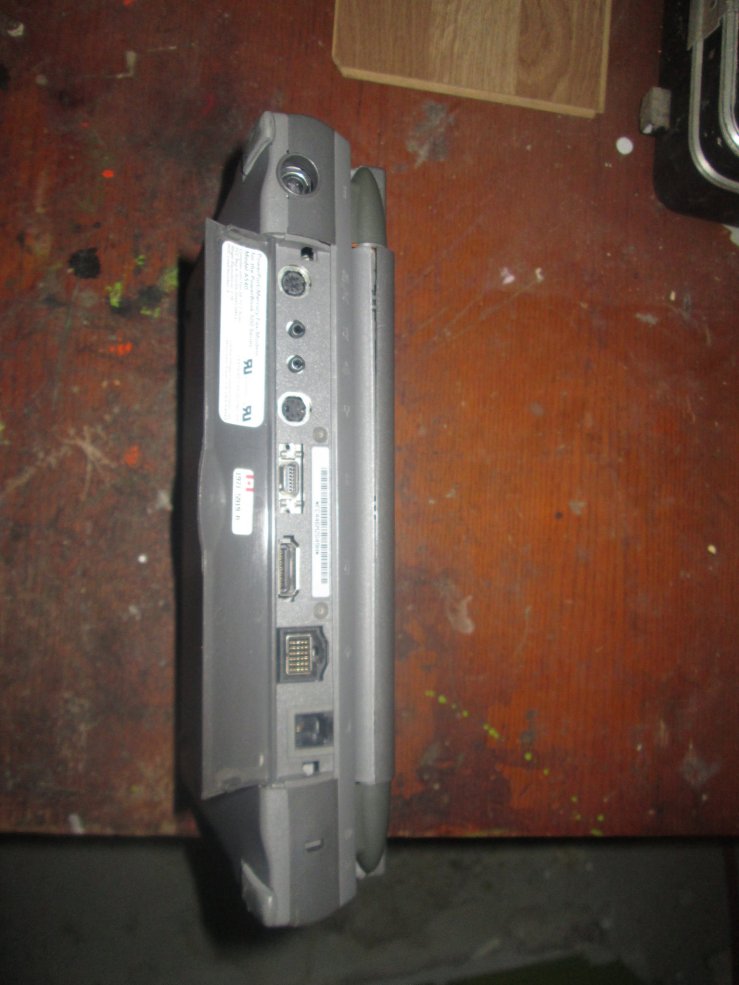
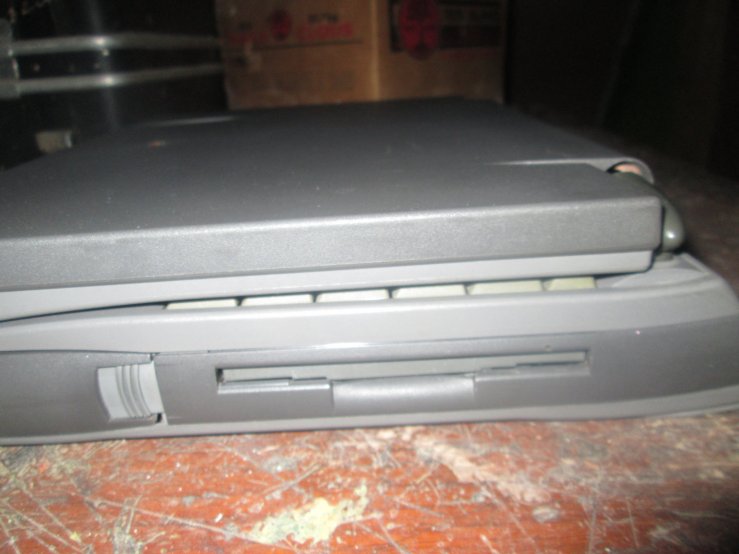 On the back for ports we have, ADB which was a standard for every apple computer produced before 1998, HDI-30 SCSI also known aka. a Scuzzy port, two serial ports for a printer and modem, microphone, sound in, a security lock and before it became an industry standard we have an AAUI-15 ethernet port, in fact this may be the first ever laptop computer to include an ethernet port. You’re not gonna find an USB ports or even HDMI ports on this computer, because it’s too old to have them. On the sides we have a 1.44 megabyte floppy disk drive dubbed as the “Superdrive” and it also has a thing where you can use two batteries, install custom modules or even install an FPU co-processor. The FPU Co-Processor module is pretty useful for all models in the powerbook series except for the PowerBook 550c, because the PowerBook 550c actually has the full Motorola 68040 processor, which already has an FPU built in. Another interesting thing about the PowerBook 550c is that it was only sold in Japan. For those of you who are too young to remember even remember having a computer with a floppy disk drive, a floppy disk is a square shaped disk that is usually used to store data and it’s also considered magnetic storage media. If you want to know how a typical floppy disk works, allow me to give you a demonstration.
On the back for ports we have, ADB which was a standard for every apple computer produced before 1998, HDI-30 SCSI also known aka. a Scuzzy port, two serial ports for a printer and modem, microphone, sound in, a security lock and before it became an industry standard we have an AAUI-15 ethernet port, in fact this may be the first ever laptop computer to include an ethernet port. You’re not gonna find an USB ports or even HDMI ports on this computer, because it’s too old to have them. On the sides we have a 1.44 megabyte floppy disk drive dubbed as the “Superdrive” and it also has a thing where you can use two batteries, install custom modules or even install an FPU co-processor. The FPU Co-Processor module is pretty useful for all models in the powerbook series except for the PowerBook 550c, because the PowerBook 550c actually has the full Motorola 68040 processor, which already has an FPU built in. Another interesting thing about the PowerBook 550c is that it was only sold in Japan. For those of you who are too young to remember even remember having a computer with a floppy disk drive, a floppy disk is a square shaped disk that is usually used to store data and it’s also considered magnetic storage media. If you want to know how a typical floppy disk works, allow me to give you a demonstration.
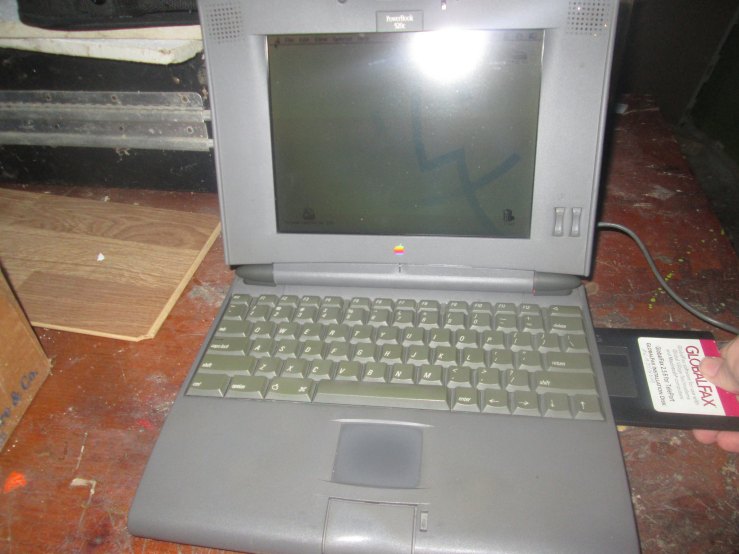 All right, here’s how it works. You put the disk into the computer and it usually makes a sound whenever you put it in. Once you have put it in, you can access the files put onto the disk itself, now I’ll show you how to eject the disk. The way you eject disks on the Mac OS is rater unorthodox, you just drag the disk icon to the trash can and there you go, the disk is finally eject. If you don’t this method, you can also go on the tab and click “Eject disk”.
All right, here’s how it works. You put the disk into the computer and it usually makes a sound whenever you put it in. Once you have put it in, you can access the files put onto the disk itself, now I’ll show you how to eject the disk. The way you eject disks on the Mac OS is rater unorthodox, you just drag the disk icon to the trash can and there you go, the disk is finally eject. If you don’t this method, you can also go on the tab and click “Eject disk”.
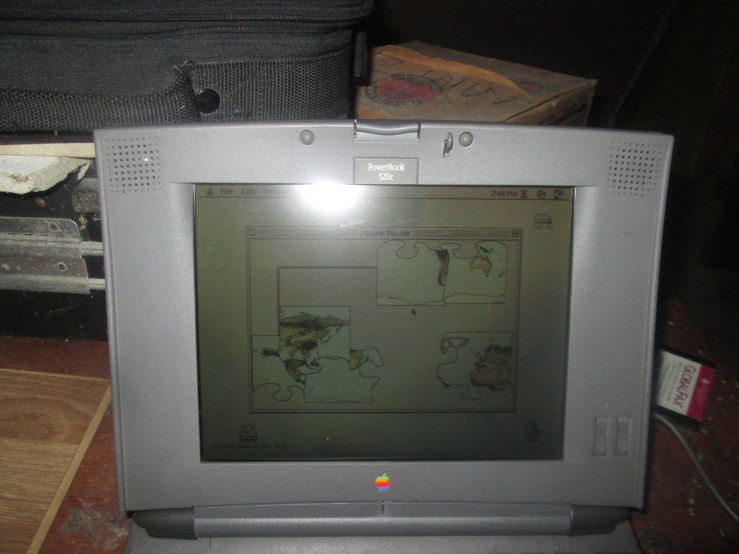 The PowerBook 520c is hooked up and ready to go. In order to boot up this computer, you simply press on the power key. We are now booted into the operating system itself and it boots up pretty darn fast, even for a computer that has a 25 megahertz processor. Just every other Macintosh computer that uses a 68040 processor, it can only run up to Mac OS 8.1, but this one I have is running Mac OS 8.0. Let’s test the sound by using simple sound, shall we?. The interesting thing this is PowerBook that I have came with some extra sound effects. I assume that the original owner for this computer added these sound effects in SimpleSound, because I don’t think they originally came with the computer itself. As you can tell, the sound is pretty good for a laptop that came out in 1994 and it’s definitely better than any of the other laptops that came out during this era. Let’s play some good old jigsaw puzzle. Were going to do the easy puzzle, because this is just a quick demonstration. Yes, this laptop comes with a passive matrix display, but for a computer to have a passive matrix display, it’s actually pretty good. Notice how it doesn’t fade in as much as other passive matrix displays did and there’s no quote on quote “ghosting”. Yes, I have officially declared myself the master of puzzles, now that I have given you a demonstration on this laptop, lets power it down.
The PowerBook 520c is hooked up and ready to go. In order to boot up this computer, you simply press on the power key. We are now booted into the operating system itself and it boots up pretty darn fast, even for a computer that has a 25 megahertz processor. Just every other Macintosh computer that uses a 68040 processor, it can only run up to Mac OS 8.1, but this one I have is running Mac OS 8.0. Let’s test the sound by using simple sound, shall we?. The interesting thing this is PowerBook that I have came with some extra sound effects. I assume that the original owner for this computer added these sound effects in SimpleSound, because I don’t think they originally came with the computer itself. As you can tell, the sound is pretty good for a laptop that came out in 1994 and it’s definitely better than any of the other laptops that came out during this era. Let’s play some good old jigsaw puzzle. Were going to do the easy puzzle, because this is just a quick demonstration. Yes, this laptop comes with a passive matrix display, but for a computer to have a passive matrix display, it’s actually pretty good. Notice how it doesn’t fade in as much as other passive matrix displays did and there’s no quote on quote “ghosting”. Yes, I have officially declared myself the master of puzzles, now that I have given you a demonstration on this laptop, lets power it down.
Well, I hope you have enjoyed this article and I’ll see you later.
